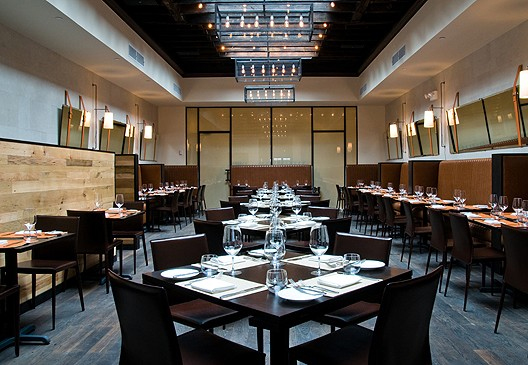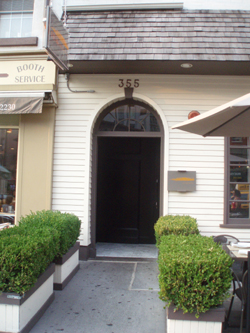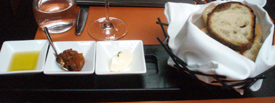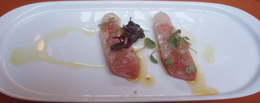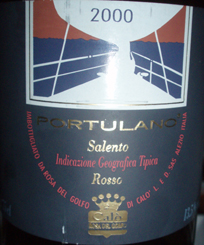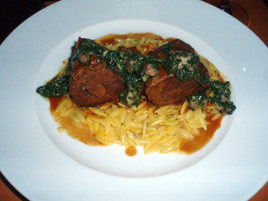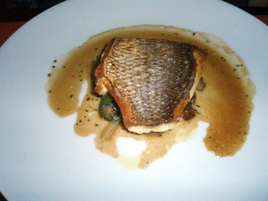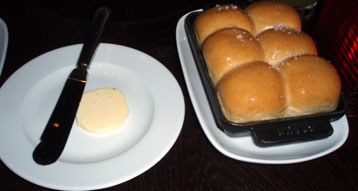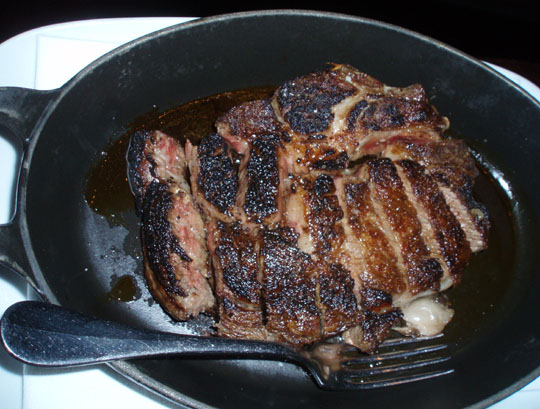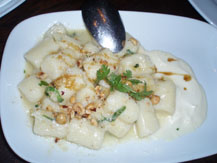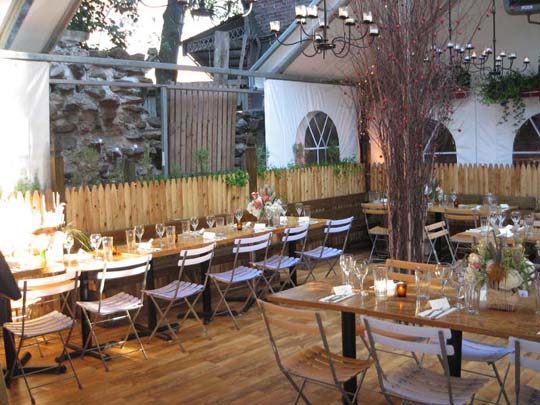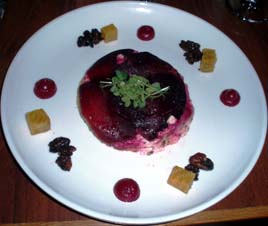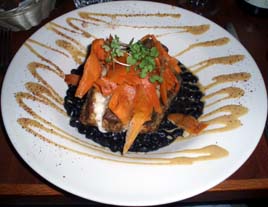The John Dory
 Sunday, December 7, 2008 at 12:10PM
Sunday, December 7, 2008 at 12:10PM 

Note: The John Dory closed in August 2009. A similar, but much more casual version of the concept, re-opened in 2010 in the Ace Hotel as the John Dory Oyster Bar.
*
Five years ago, The Spotted Pig was an overnight sensation in the West Village. If chef April Bloomfield and her partner Ken Friedman had followed the usual path, by now there’d be Pig clones all over town, and a couple more in Vegas and Atlantic City. But Bloomfield stayed focused on the Pig, which earned an improbable Michelin star and has held onto it for four years running.
Nothing lasts forever: Bloomfield and Friedman now have their second restaurant, The John Dory, which opened two weeks ago in Southwest Chelsea, on the same block as Del Posto and Craftsteak. (Del Posto’s Mario Batali and Joe Bastianich are investors in both the Spotted Pig and the John Dory.)
 Friedman has an eye for witty design. At the Spotted Pig, the theme is “pig art.” Here, it’s “fish art,” and he arrays it even more deftly than at the earlier restaurant, from fish lures embedded in a countertop, to fish tiles in the floor. A large tropical fish tank stands sentry over the bar.
Friedman has an eye for witty design. At the Spotted Pig, the theme is “pig art.” Here, it’s “fish art,” and he arrays it even more deftly than at the earlier restaurant, from fish lures embedded in a countertop, to fish tiles in the floor. A large tropical fish tank stands sentry over the bar.
There are just two small dining rooms. The first one, with about eight tables, rests on a narrow elevated platform and offers a terrific view of the open kitchen. The second one is in a side room with a view of the fish tank. There is ample counter seating facing the kitchen.
 Bloomfield has wisely kept the opening menu short and focused, with just seven appetizers ($14–20) and eight entrées ($24–35). There’s also a few raw bar choices and five crudi ($16–20). Side dishes ($8–10) are excellent, as they are at the Spotted Pig.
Bloomfield has wisely kept the opening menu short and focused, with just seven appetizers ($14–20) and eight entrées ($24–35). There’s also a few raw bar choices and five crudi ($16–20). Side dishes ($8–10) are excellent, as they are at the Spotted Pig.
It was obvious that many of the patrons were friends of the management, but Bloomfield never once left the kitchen to schmooze (she left that to Friedman). We saw one critic in the house (GQ’s Alan Richman), and the staff seemed to think Frank Bruni was coming too, but we didn’t spot him.
We started with a cute amuse-bouche of arctic char pâté (above right) with chips for spreading. There should probably be a bit more, as it disappeared rather quickly.


Sardines “A La Plancha” (above left; $18) had a nice cruncy texture and were nicely seasoned with almonds, raisins and paprika. My girlfriend pronounced the Fish Soup (above right; $16) a success.


There is, of course, John Dory on the menu. On some nights, they seem to offer it for one, but when we visited it was available only for two ($50). Instead, I had the Whole Grilled Sea Bream (above left; $26), which was presented tableside and then filleted. This was a lovely preparation, with a rosemary-anchovy pesto on the skin. Pan-Roasted Cod (above right; $28) was just as good.


Sweet Potatoes (above left; $8) were dusted with bone marrow and served in hefty beefsteak slices. Our second side dish was much delayed, but I give the server credit for how she handled it. Instead of just leaving us staring at dirty dishes, she cleared the table and re-set it with fresh plates and flatware. Jensen’s Temptation (above right; $10) works perfectly well as a separate course, though it clearly wasn’t intended that way. It’s a Swedish preparation of scallopped potatoes, with onions, heavy cream, and an anchovy crust.
As we were leaving, it dawned on me that the coat-check attendant hadn’t given me a ticket. Despite that, she seemed to know who I was, and had my coat ready for me. It was just one of many points, both little and great, that made me feel like these people know how to run a restaurant. My girlfriend had the same thought: “They’re going to do just fine.”
The John Dory (85 Tenth Avenue between 15th & 16th Streets, Chelsea)
Food: **
Service: **
Ambiance: **
Overall: **











